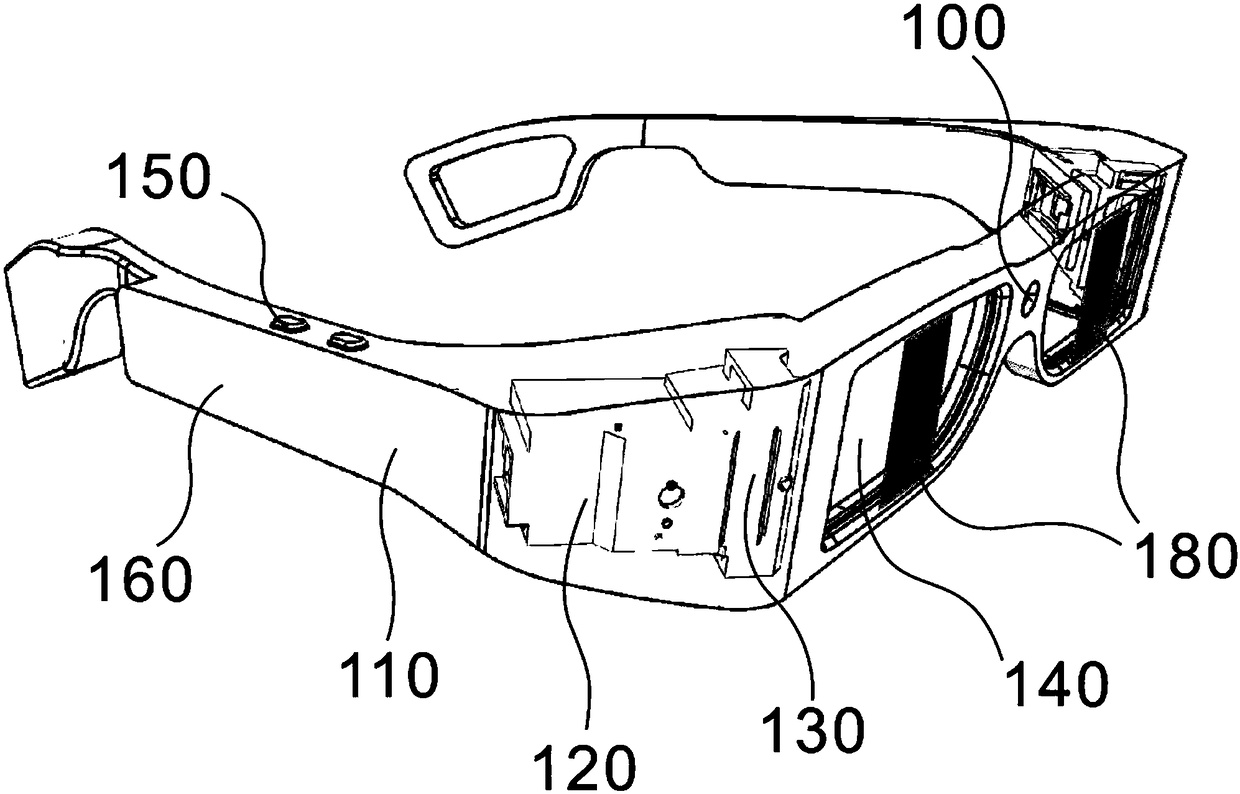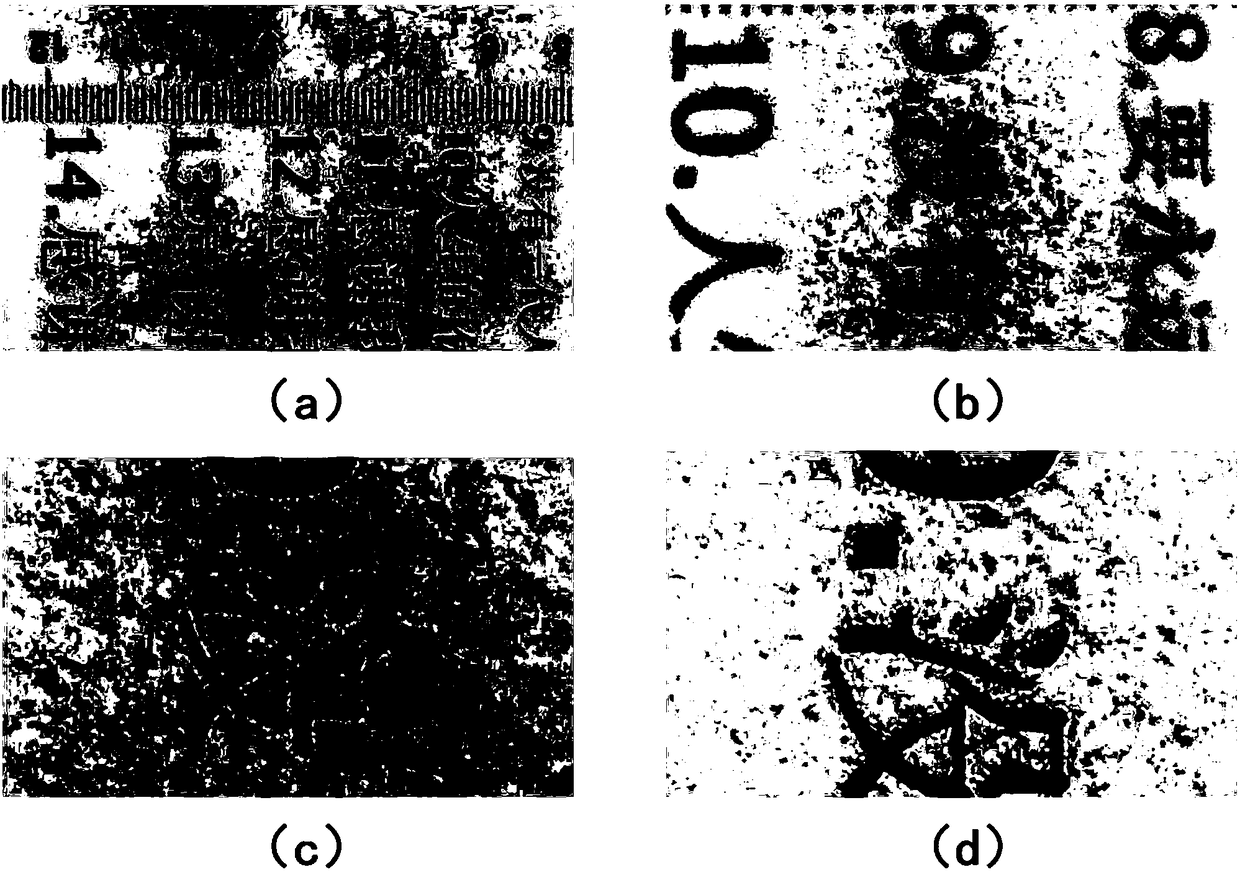Amblyopia visual aid based on waveguide display
A vision aid and waveguide technology, applied in the field of amblyopia vision aids, can solve the problems of inconvenient carrying, abrupt appearance of the telescope, inability to see objects near and far away, etc.
- Summary
- Abstract
- Description
- Claims
- Application Information
AI Technical Summary
Problems solved by technology
Method used
Image
Examples
Embodiment 1
[0031] figure 1 A structural diagram of a low-vision visual aid based on a waveguide display provided for an embodiment of the present invention. In this embodiment, the camera 100 and related transmission circuits constitute a camera system; the circuit control board 110 and other electronics in the visual aid The circuit forms part of the circuit control system; the button 150, the touch panel 160 and related circuits form the input device; the optical-mechanical structure 120, the imaging optical circuit 130, and the optical waveguide form the waveguide display system.
[0032] Such as figure 1 As shown, the camera 100 is responsible for collecting the surrounding environment information. Under the control of the chip of the circuit control board 110, the camera 110 can judge the distance of the target object and automatically focus, so as to clearly capture the target object.
[0033] The FOV (field of view) of the camera determines the spatial range of the captured objec...
Embodiment 2
[0052] This embodiment is a structural and functional optimization based on the first embodiment. The camera system, circuit control system, waveguide display system, and shielding sheet are all the same as the first embodiment, and only the input in the first embodiment The device is expanded and optimized, and an output device 170 is added.
[0053] The AR glasses-based waveguide display-based amblyopia vision aid provided by this embodiment has an input device that includes not only buttons 150 and a touchpad 160, but also a Bluetooth display module (such as Figure 5 As shown), the Bluetooth display module is directly connected to the amblyopia vision aid through Bluetooth, or the mobile phone is used as an intermediary, and the Bluetooth device and the amblyopia vision aid are indirectly connected through a wireless communication protocol (such as Bluetooth or wireless wifi). The output device 170 is a public release on the low vision aid provided by the embodiment (see ...
PUM
| Property | Measurement | Unit |
|---|---|---|
| Thickness | aaaaa | aaaaa |
Abstract
Description
Claims
Application Information
 Login to View More
Login to View More - R&D
- Intellectual Property
- Life Sciences
- Materials
- Tech Scout
- Unparalleled Data Quality
- Higher Quality Content
- 60% Fewer Hallucinations
Browse by: Latest US Patents, China's latest patents, Technical Efficacy Thesaurus, Application Domain, Technology Topic, Popular Technical Reports.
© 2025 PatSnap. All rights reserved.Legal|Privacy policy|Modern Slavery Act Transparency Statement|Sitemap|About US| Contact US: help@patsnap.com



